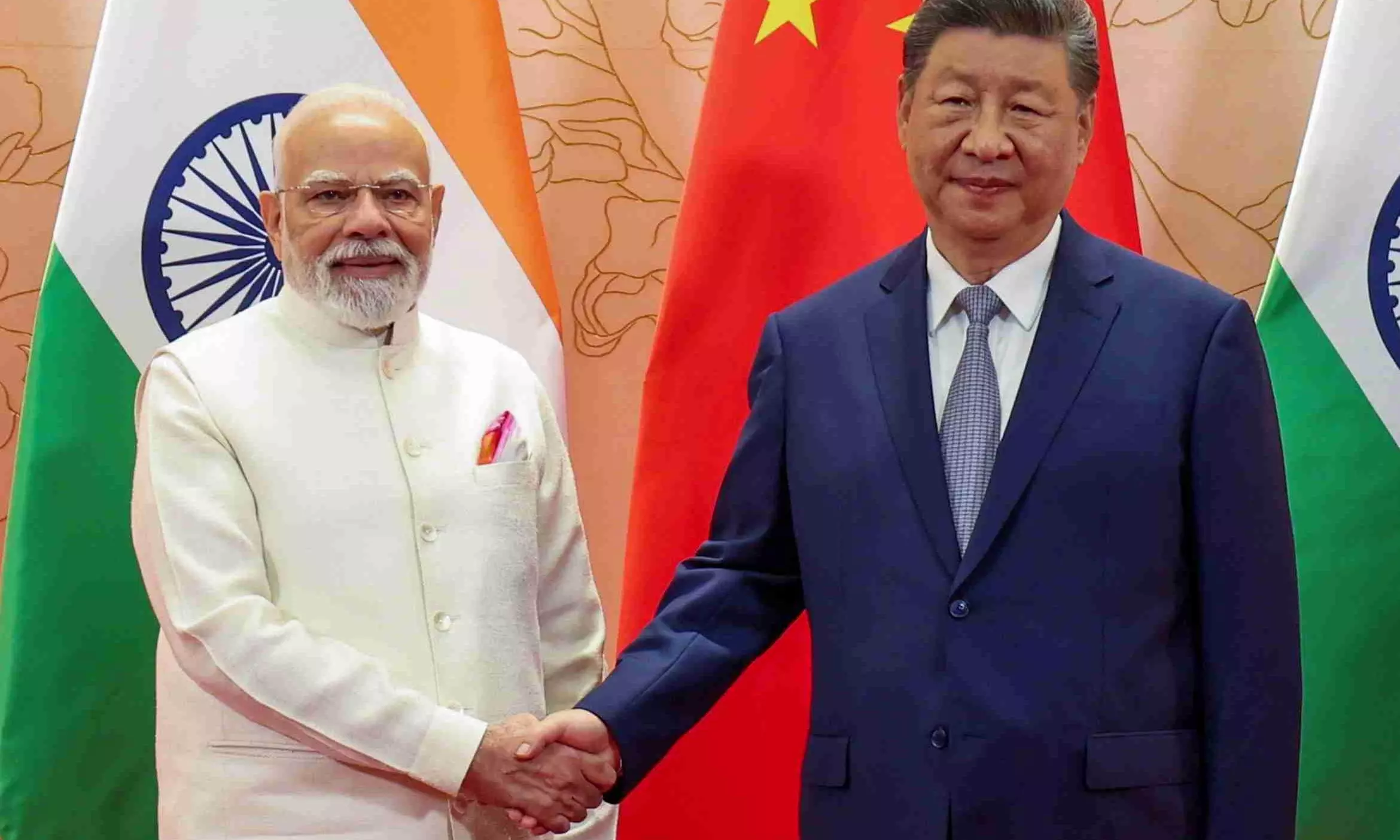
- Home
- India
- World
- Premium
- THE FEDERAL SPECIAL
- Analysis
- States
- Perspective
- Videos
- Sports
- Education
- Entertainment
- Elections
- Features
- Health
- Business
- Series
- In memoriam: Sheikh Mujibur Rahman
- Bishnoi's Men
- NEET TANGLE
- Economy Series
- Earth Day
- Kashmir’s Frozen Turbulence
- India@75
- The legend of Ramjanmabhoomi
- Liberalisation@30
- How to tame a dragon
- Celebrating biodiversity
- Farm Matters
- 50 days of solitude
- Bringing Migrants Home
- Budget 2020
- Jharkhand Votes
- The Federal Investigates
- The Federal Impact
- Vanishing Sand
- Gandhi @ 150
- Andhra Today
- Field report
- Operation Gulmarg
- Pandemic @1 Mn in India
- The Federal Year-End
- The Zero Year
- Science
- Brand studio
- Newsletter
- Elections 2024
- Events
- Home
- IndiaIndia
- World
- Analysis
- StatesStates
- PerspectivePerspective
- VideosVideos
- Sports
- Education
- Entertainment
- ElectionsElections
- Features
- Health
- BusinessBusiness
- Premium
- Loading...
Premium - Events

Prime Minister Narendra Modi with Chinese President Xi Jinping during a meeting at the SCO Summit in Tianjin, China. Photo: PTI
Despite gestures of cooperation at the recently concluded SCO Summit, India and China remain divided on border tensions and future of bilateral parity
International relations are ever-changing and dynamic. The interests of countries coincide at one point in time but come into conflict at others. It is therefore necessary for a country’s foreign policy to constantly adjust to global equations as they get transformed.
That stated, there are some national positions that have to be maintained. Foremost among them is the preservation of territorial integrity and the need to protect nationals against violence perpetrated by enemy states or non-state actors who are promoted and instigated by the enemy.
Yes, the means to achieve them can be adjusted, but their objectives can never be overlooked.
Modi-Xi meet
It is necessary to recall these points to assess the results of Prime Minister Narendra Modi’s meeting with Chinese President Xi Jinping on the sidelines of the Shanghai Cooperation Organisation (SCO) summit in Tianjin, China, on August 31. The country was closely monitoring this meeting because it was Modi’s second meeting with the Chinese leader after the Galwan incident of June 2020, but also because it came in the background of the severe downturn in relations between India and the US.
The negativity in India-US ties occurred on account of the US imposing a 50 per cent tariff on Indian exports, and also what appears to be a breakdown of personal relations between Modi and US President Donald Trump.
Also read: India-China at SCO: Retd Commodore Seshadri Vasan explains Modi’s balancing act
Following the Modi-Xi meeting, India and China issued separate statements on it. Foreign Secretary Vikram Misri also addressed a media briefing on Modi’s interaction with Xi. The Chinese statement noted what Xi had told Modi and what it claimed Modi had told Xi. There was no attempt to show where both leaders had agreed; these kinds of formulations are generally noted in a joint statement.
The Indian statement, in some portions, sought to use the “both leaders agreed” format. The same script was followed in Misri’s opening remarks at the media briefing.
Fragile ties
The Chinese are a deliberate people. Their official positions are prepared in advance, and so is the manner in which they are articulated. Hence, what Xi said on the border issue and the need to maintain peace, as compared to what Modi stated on this all-important matter, needs to be observed both for similarities as well as differences. In addition, some other matters in what the Indian statement mentioned merit thorough attention not only of foreign and security policy experts but also of the general public.
This is because China is our largest neighbour. Also, despite all the fine words said by Modi and Xi on the future of bilateral ties, India should never forget that China will always impede India’s rise. Its ‘iron brother’ ties with Pakistan show that.
Thus, Modi’s comment that India and China can be partners and not rivals is good words, but will China ever take them seriously? Even if China consents to be a partner, it will always want India to be a junior and not an equal partner. Surely, India cannot accept this despite the Chinese economy currently being roughly six times India’s size.
In recent times, the damage to India’s ties began with China’s blatant and violent attempt, beginning in April 2020, to change the status quo along the Line of Actual Control (LAC) in Ladakh. That led to violent clashes and took years of diplomatic and military negotiations to ‘stabilise’ the situation.
Modi, Xi not on same page?
India maintained that bilateral relations could not become normal unless the border became tranquil and the Chinese military refrained from aggressive actions. In seeking to change the existing situation along the LAC, China broke the understandings reached between the two countries in the 1990s that peace and tranquility would be maintained along the borders by the two armies respecting the rules which they had agreed to.
Also read: PM Modi flags concerns over cross-border terrorism in talks with Xi
It would appear that India is satisfied that the condition along the LAC has become stable. Modi said in his opening statement at his meeting with Xi, “After the disengagement at the border, an atmosphere of peace and stability is now in place. Our Special Representatives have also reached an agreement on border management".
Xi's remarks on the border were very different from Modi’s. He said, “The two Asian neighbours should combine their strength to maintain peace and tranquility in their border regions." The Ministry of External Affairs (MEA)'s statement on the stability along the border stated, “The two leaders noted with satisfaction the successful disengagement last year and the maintenance of peace and tranquility along the border areas since then”.
Differing statements
There is an obvious difference between the Chinese statement and the MEA comments on what Xi is supposed to have agreed with Modi. This reveals that even on the issue of the maintenance of peace and tranquility along the border the two countries are still not entirely on the same page.
The normalisation of India-China relations began after then prime minister Rajiv Gandhi’s visit to China in 1988. Over the past 15 years, the two countries' economic and commercial relations have become intense. Yet, with all this, India has always maintained that the full normalisation of bilateral relations requires a resolution of the boundary issue.
China has around 38,000 square km of Indian territory, and more than 5,000 square kilometres of Indian land has been illegally ceded by Pakistan to China. While this matter is to be resolved, India has urged China to at least show seriousness in working for an agreed LAC. It has really shown no interest to do so even though the Special Representatives of the two governments have been responsible to discuss the boundary and the LAC.
Boundary issue
China’s position is that the ‘boundary issue’ should not impede relations in other areas. Xi reiterated this stand in his discussions with Modi during this meeting too. On his part, Modi did not say anything on the need to resolve the border issue in his opening comments during his meeting with Xi Jinping.
Also read: No genuine convergence yet after Modi-Xi meet: Ex-envoy Meera Shankar
The MEA statement on this issue reports thus, “They expressed commitment to a fair, reasonable, and mutually acceptable resolution of the boundary question proceeding from the political perspective of their overall bilateral relations and the long-term interests of the two peoples. They recognised the important decisions taken by the two Special Representatives in their talks earlier this month, and agreed to further support their efforts”.
The Chinese statement does not mention all this. All it notes is that Xi Jinping said that the two countries should “not allow the boundary question to define the overall China-India relations”.
China not keen on resolving conflict
Thus, on the crucial issue of the border, the positions of the two countries continue to be far apart. China is not interested at all in resolving the issue. At most, it may wish to do so in a piecemeal manner, which will be to India’s disadvantage. India also cannot ignore the massive infrastructure development China is undertaking in Tibet, which has military implications. Thus, India should not reduce its deployments along the LAC, including in Ladakh.
Both Modi and Xi Jinping spoke of the advantages to the two countries of mutual cooperation. They also stressed the contributions that India and China can make to the Global South. These are fine sentiments, but the fact is that China now considers itself in the same league as the US and considers India ultimately as merely a South Asian state, nowhere its equal. Indian policy makers should not forget that even as they look for options because of Trump’s negative steps against India.
One final point: Replying to a question at his media briefing on Modi-Xi's meeting, Misri said, “Cross-border terrorism was mentioned by the prime minister as a priority. And, I would add that he did underline the fact that this is something that impacts both India and China. And, that it's important therefore that we extend understanding and extend support to each other as both of us combat cross-border terrorism. And, I would in fact like to say that we have received the understanding and cooperation of China, as we have dealt with the issue of cross-border terrorism in the context of the ongoing SCO summit."
It is true that the SCO condemned the Pahalgam attack. However, it is strange that India agreed that China also suffers from cross-border terrorism.
Cross-border terrorism means terrorism that one neighbouring country sponsors or undertakes in another, as Pakistan does in India. China may have militancy due to its repressive policies. But it does not experience cross-border terrorism. This is perhaps the first time that India has mentioned this. Why did it do so? MEA should clarify.
(The Federal seeks to present views and opinions from all sides of the spectrum. The information, ideas or opinions in the articles are of the author and do not reflect the views of The Federal.)


